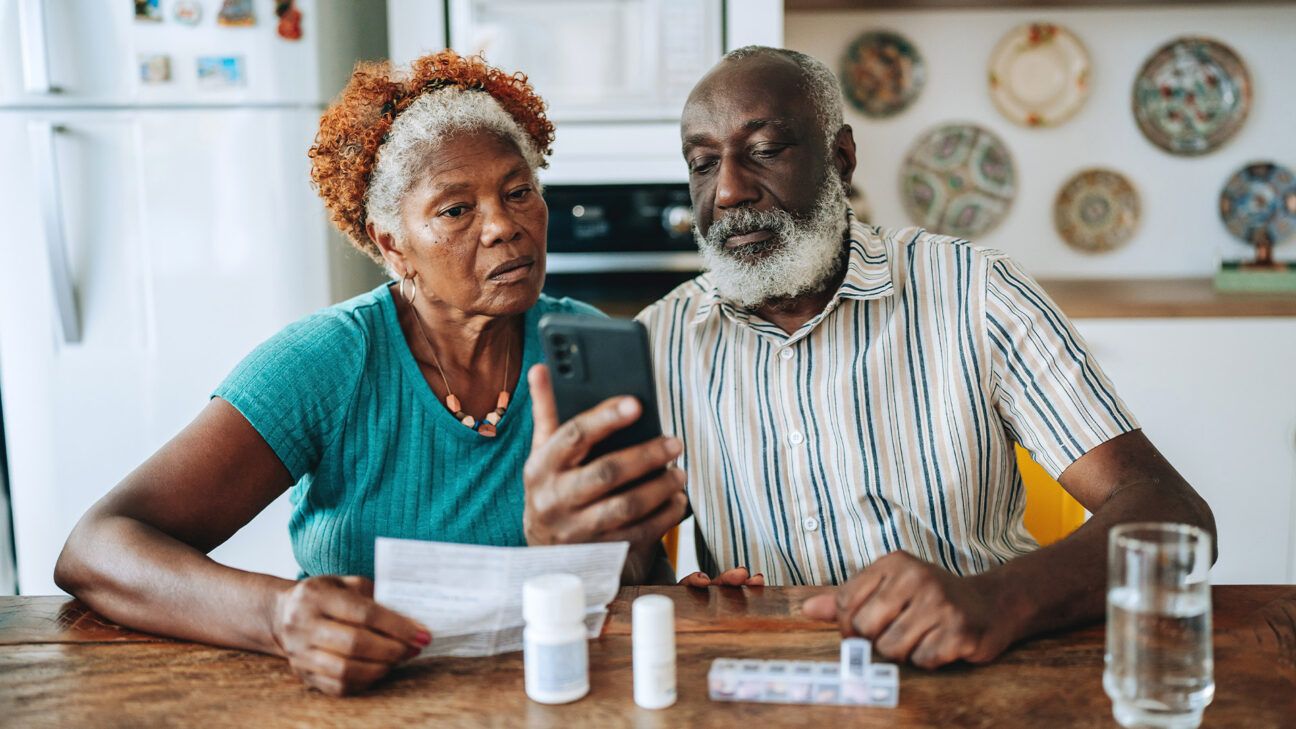Several changes are coming to Medicare’s Part D prescription drug plans in 2025 that could potentially impact enrollees’ benefits and costs, including changes in premiums, a new out-of-pocket cap, and a drop in the number of drug plans being offered.
“All in all, these 2025 changes offer a good balance between managing costs and adding protections for Medicare beneficiaries,” said Brandy Burch, CEO at BenefitBay.
“For most people, these updates will provide more stability and predictability in their healthcare expenses,” Burch told Healthline, “which can make a big difference when it comes to planning for the year ahead.”
Here’s a rundown of the top five changes coming to Medicare Part D prescription drug plans.
 Several key changes are coming to Medicare’s Part D prescription drug plans in 2025. andreswd/Getty Images
Several key changes are coming to Medicare’s Part D prescription drug plans in 2025. andreswd/Getty Images
Increase in Plan D prescription drug base premium

The Medicare Part D base beneficiary premium will increase in 2025 over the previous year. However, this doesn’t mean Medicare enrollees will pay more out of pocket each month for their Part D drug benefits.
Here’s why.
The base beneficiary premium will be $36.78 in 2025, a 6% increase from 2024, reports nonprofit KFF. This increase is capped at 6% due to a provision in the Inflation Reduction Act.
The Inflation Reduction Act also provides a premium stabilization mechanism. This limits the actual premium increases for Part D plans to about $2 per month on average.
The base premium is not what Part D enrollees pay each month. It is the base amount allowed for premiums.
The Centers for Medicare & Medicaid Services (CMS) projects that, thanks to the government’s premium stabilization efforts, the average monthly premium for stand-alone Part D plans will decrease by 4% to $40.00 in 2025.
Actual monthly premiums will range from $0 to $100 or more, reports KFF. In addition, enrollees with higher annual incomes ($103,000 or greater for individuals; $206,000 or greater for couples) will pay an income-related premium surcharge on top of the regular premium.
CMS projects that the average monthly premium for people with a Medicare Advantage plan that includes prescription drug coverage will fall by 13% to $13.50 in 2025.
However, a recent analysis by ValuePenguin found that overall Medicare Advantage premiums will increase by 4% for 2025 over the previous year — going from $24 to $25 per month. This rate change varies by state.
These are average changes, so your plan’s premiums may change by a different amount — up or down. It’s important to shop around during the Medicare Open Enrollment period, which runs from October 15 to December 7, to find the best plan for your budget and needs.
In addition, over 14 million people with Medicare will have a $0 premium for Part D plans, thanks to the government’s Low Income Subsidy (LIS) program.
You may have heard about the “donut hole” — or gap in prescription drug coverage — about Medicare Part D.
You enter this gap once your Medicare Part D plan has paid a certain amount for your prescription drugs during a single coverage year. At this point, you’ll pay more out of pocket for your prescription drugs until you reach your yearly limit.
Depending on your plan, when you hit your yearly limit, the plan may help pay for the cost of your prescription drugs again.
If this sounds confusing, don’t worry. The donut hole will disappear after 2024 and be replaced by a new $2,000 out-of-pocket cap in 2025. This change, due to the Inflation Reduction Act, affects all Medicare plans.
Once you have paid $2,000 out of pocket for covered drugs during a calendar year, you will automatically get “catastrophic coverage.” As a result, you won’t have to pay out of pocket for drugs covered by Part D for the rest of the year.
An estimated 1.4 million Medicare Part D enrollees without low-income subsidies are expected to benefit from the $2,000 out-of-pocket cap, reports KFF. These people had annual out-of-pocket spending above this limit.
Burch said the $2,000 out-of-pocket cap will have a big impact for Medicare enrollees.
“For people who rely on costly medications, having this cap means they can finally plan their healthcare budget without worrying about unexpected high costs,” she said. “It’s a big step in providing peace of mind and knowing that once they hit that $2,000 threshold, they’re covered for the rest of the year.”
This change will not only lower out-of-pocket drug costs for enrollees — especially for those taking multiple or high-priced medications — but it is also likely to help them take their drugs as prescribed, which can improve their health outcomes.



